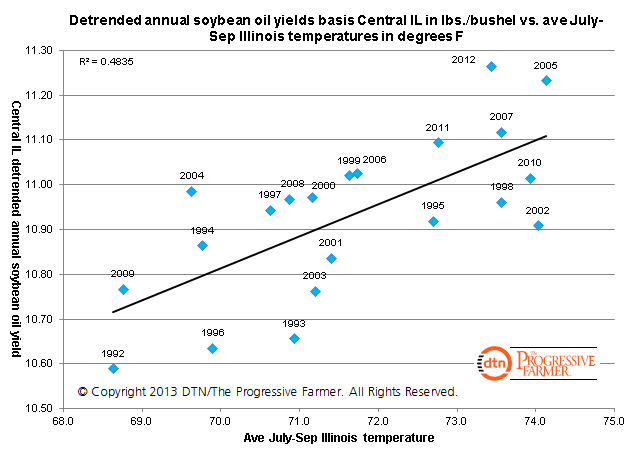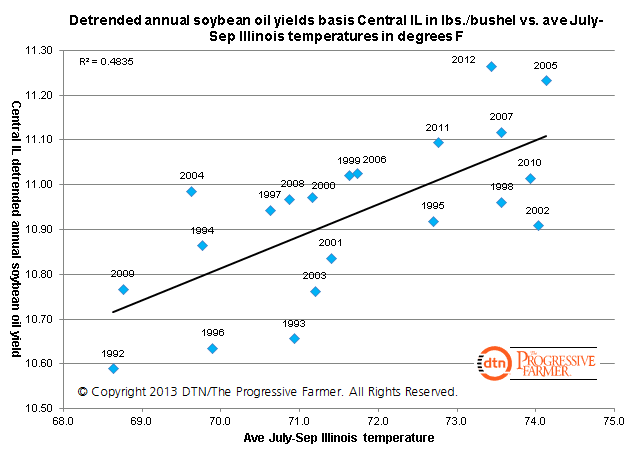Fundamentally Speaking
Soybean Oil Extraction Rates
The continued below normal temperatures in much of the Corn Belt as accentuated fears about the impact of an early fall freeze on corn and soybean yields due to this spring’s tardy plantings.
Another consideration from the less than average temperatures is the impact on soybean oil yields.
There have been a number of studies showing the correlation between higher than normal oil yield extraction rates from soybeans and above average summer temperatures and vice-versa.
P[L1] D[0x0] M[300x250] OOP[F] ADUNIT[] T[]
The accompanying graphic tracks this relation using the average annual soybean oil extract rate basis Central Illinois expressed in pounds per bushel vs. the average July-September Illinois temperature measured in degrees Fahrenheit.
One consideration is that Central Illinois soybean oil extraction rates have trended higher over time regardless of summer temperatures.
The reason for this is the technological improvements that have occurred over the years for both soybeans and crushing equipment where more pounds of oil are now extracted from soybeans than used to be the case.
Our work shows that soybean oil yield extraction rates have improved by about 0.03 pounds per bushel per year.
Therefore, the annual extract rates were lowered by 0.03 lb. /bushel per year to de-trend the data.
The chart shows that summer Illinois temperatures explain about half the variability in Central Illinois soybean oil yield extraction rates.
Note the coolest July-Sep period in 1992 saw the lowest oil extraction rates with the high temperatures last year and in 2005 leading to the highest extraction rates.
(KA)
© Copyright 2013 DTN/The Progressive Farmer. All rights reserved.






Comments
To comment, please Log In or Join our Community .